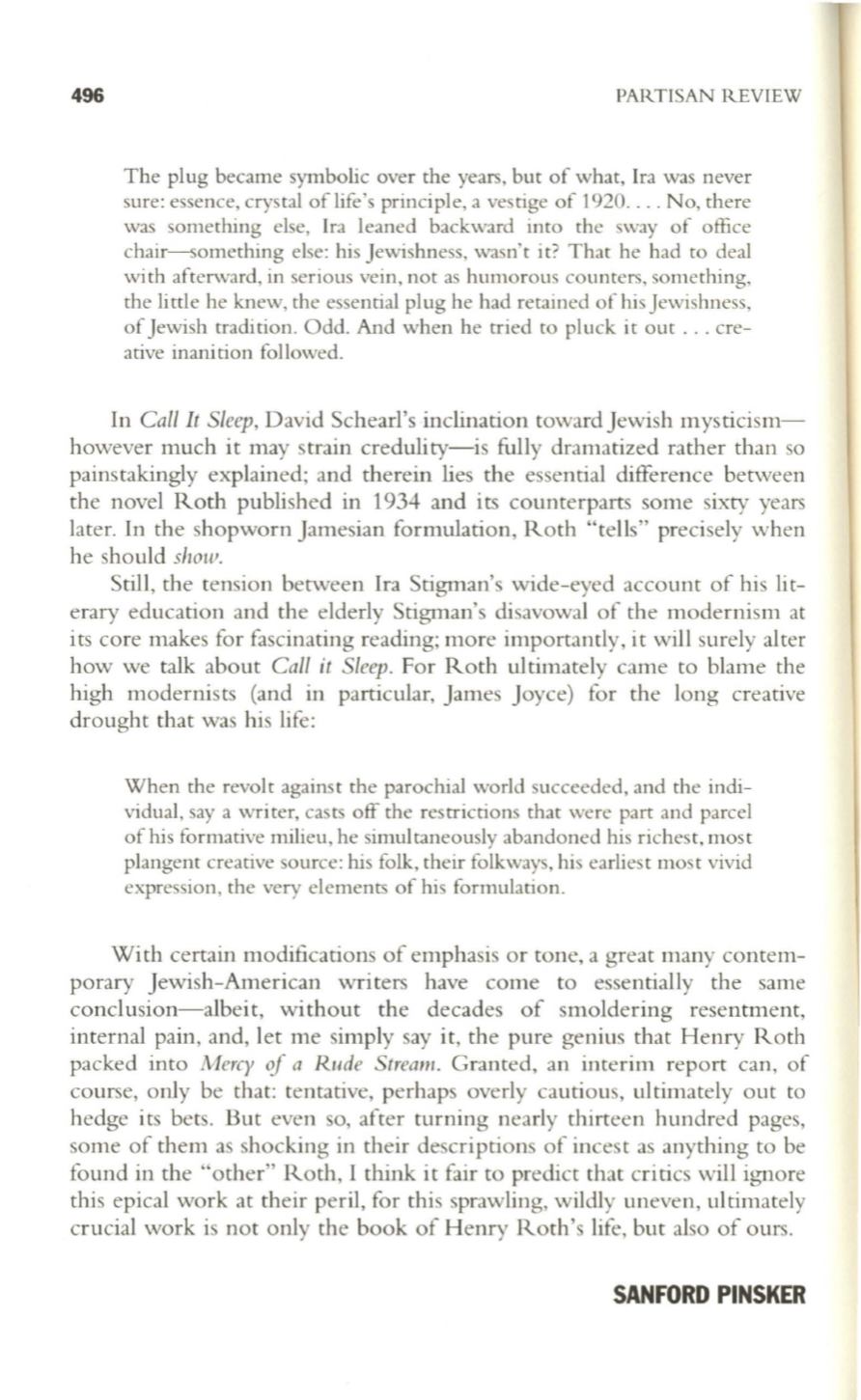
496
PARTISAN REVIEW
The plug became symbolic over the years, but of what, Ira was never
sure: essence, crystal of life's principle, a vestige of 1920.... No, there
was something else, Ira leaned backward into the sway of office
chair---something else: his Jewishness, wasn't it? That he had
to
deal
wi th afterward, in serious vein, not as humorous counters, something,
the li ttIe he knew, the essential pI ug he had retained of his Jewishness,
of Jewish tradition. Odd. And when he tried
to
pluck it out ... cre–
ative inanition followed.
In
Call It Sleep,
David Schearl's inclination toward Jewish mysticism–
however much it may strain credulity-is fully dramatized rather than so
painstakingly explained; and therein lies the essential difference between
the novel Roth published in 1934 and its counterparts some sixty years
later. In the shopworn Jamesian formulation, Roth "tells" precisely when
he should
shaUl.
Still, the tension between Ira Stigman's wide-eyed account of his lit–
erary education and the elderly Stigman's disavowal of the modernism at
its core makes for fascinating reading; more importantly, it will surely al ter
how we talk about
Call it Sleep.
For Roth ultimately came to blame the
high modernists (and in particular, James Joyce) for the long creative
drought that was his life:
When the revol t against the parochial world succeeded, and the indi–
vidual, say a writer, casts off the restrictions that were part and parcel
of his formative milieu, he simultaneously abandoned his richest, most
plangent creative source: his folk, their folkways , his earliest most vivid
expression, the very elements of his formul ation.
With certain modifications of emphasis or tone, a great many contem–
porary Jewish-American writers have come to essentially the same
conclusion-albeit, without the decades of smoldering resentment,
internal pain, and, let me simply say it, the pure genius that Henry Roth
packed into
Mercy of a Rude Stream.
Granted, an interim report can, of
course, only be that: tentative, perhaps overly cautious, ultimately out to
hedge its bets. But even so, after turning nearly thirteen hundred pages,
some of them as shocking in their descriptions of incest as anything to be
found in the "other" Roth, I think it fair to predict that critics will ignore
this epical work at their peril, for this sprawling, wildly uneven, ultimately
crucial work is not only the book of Henry Roth's life, but also of ours.
SANFORD PINSKER


